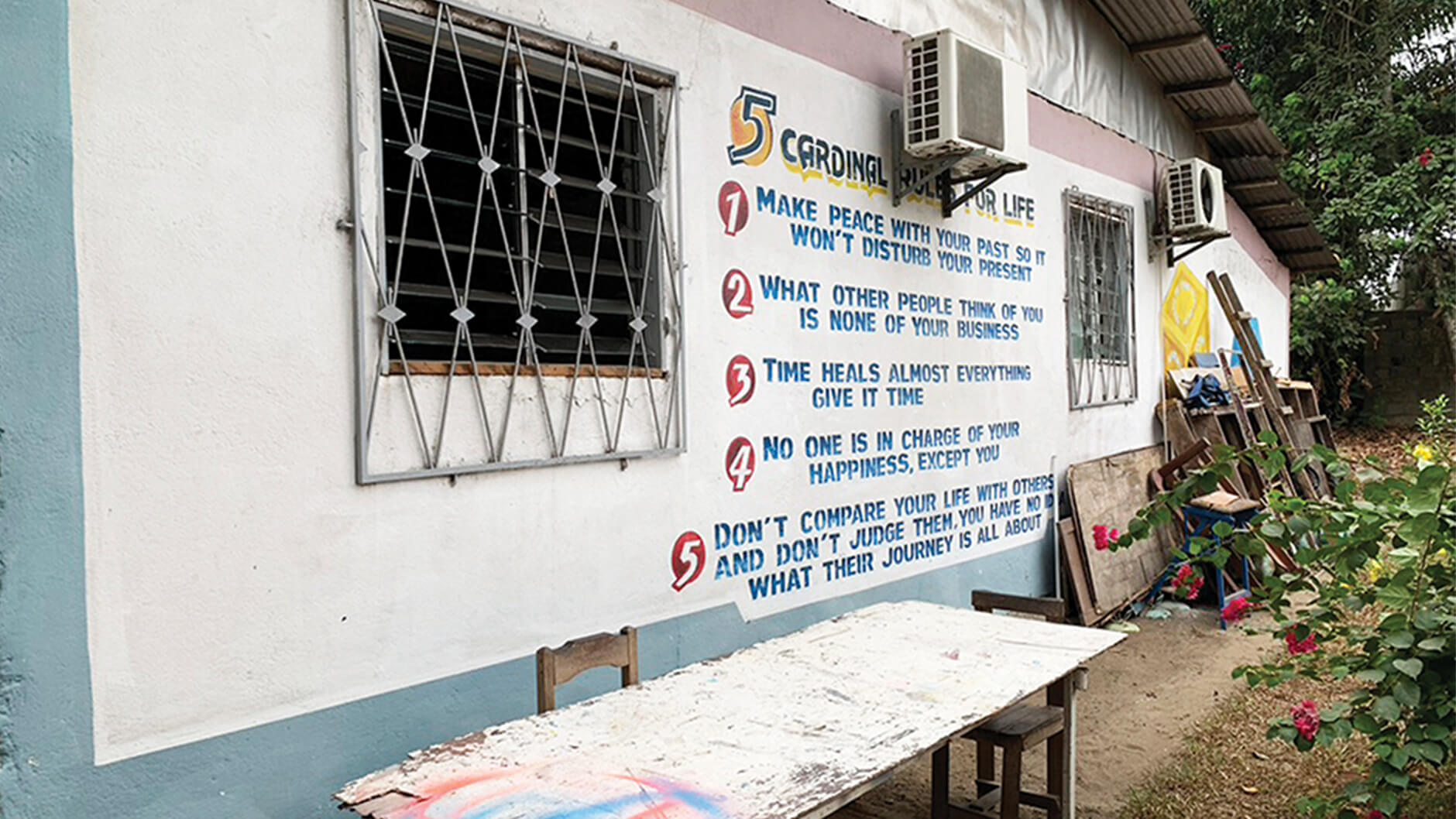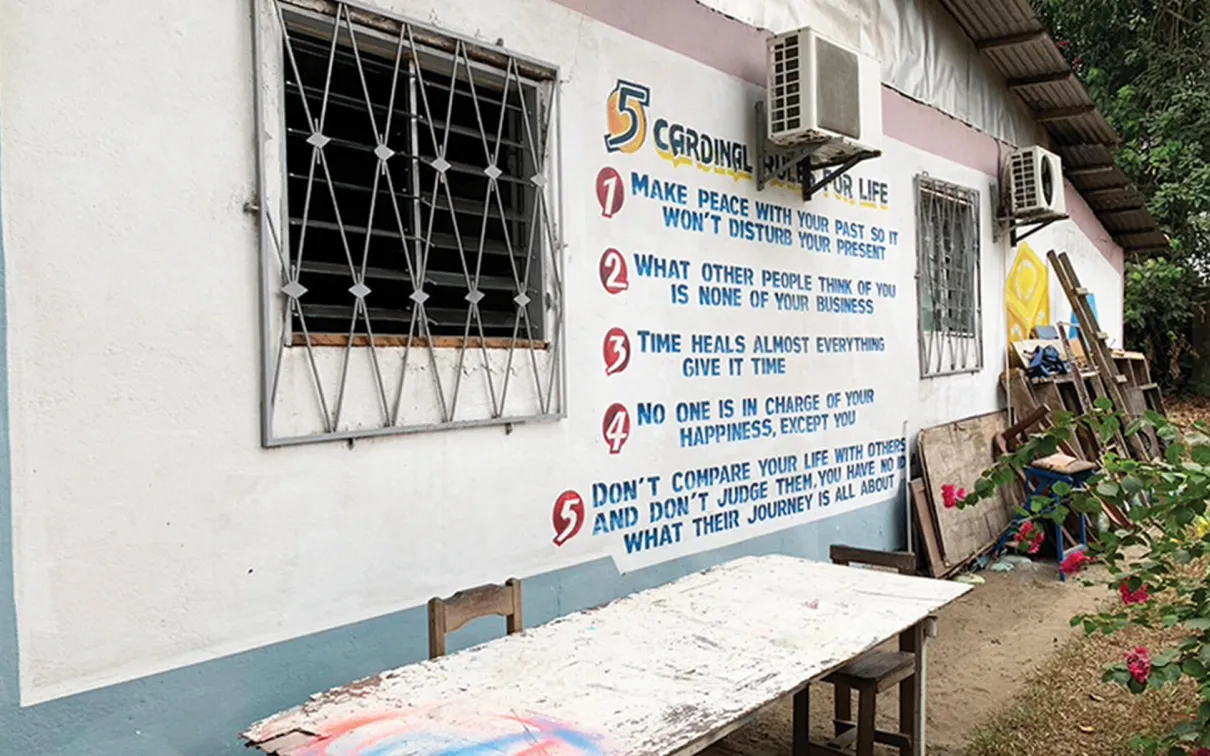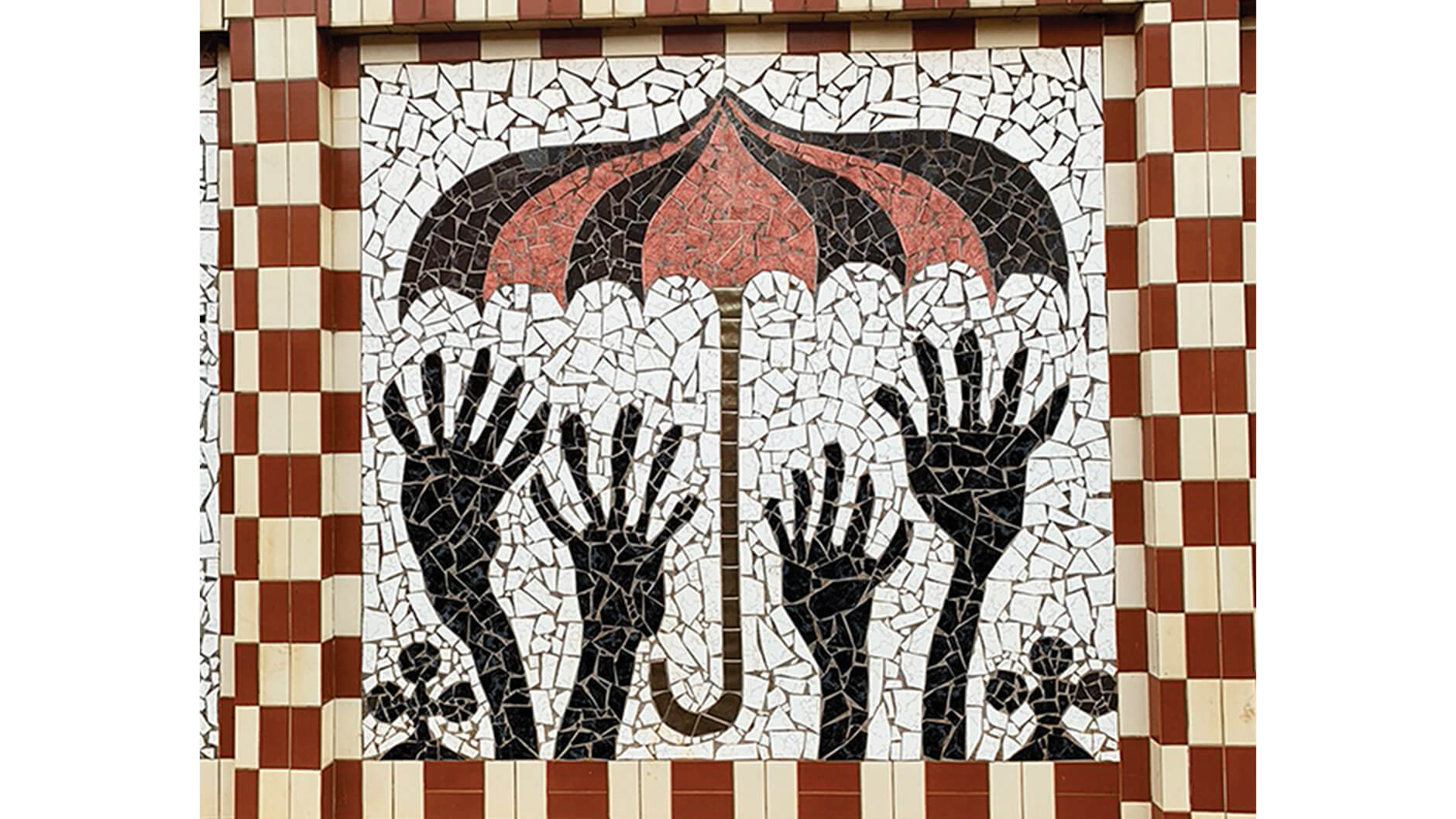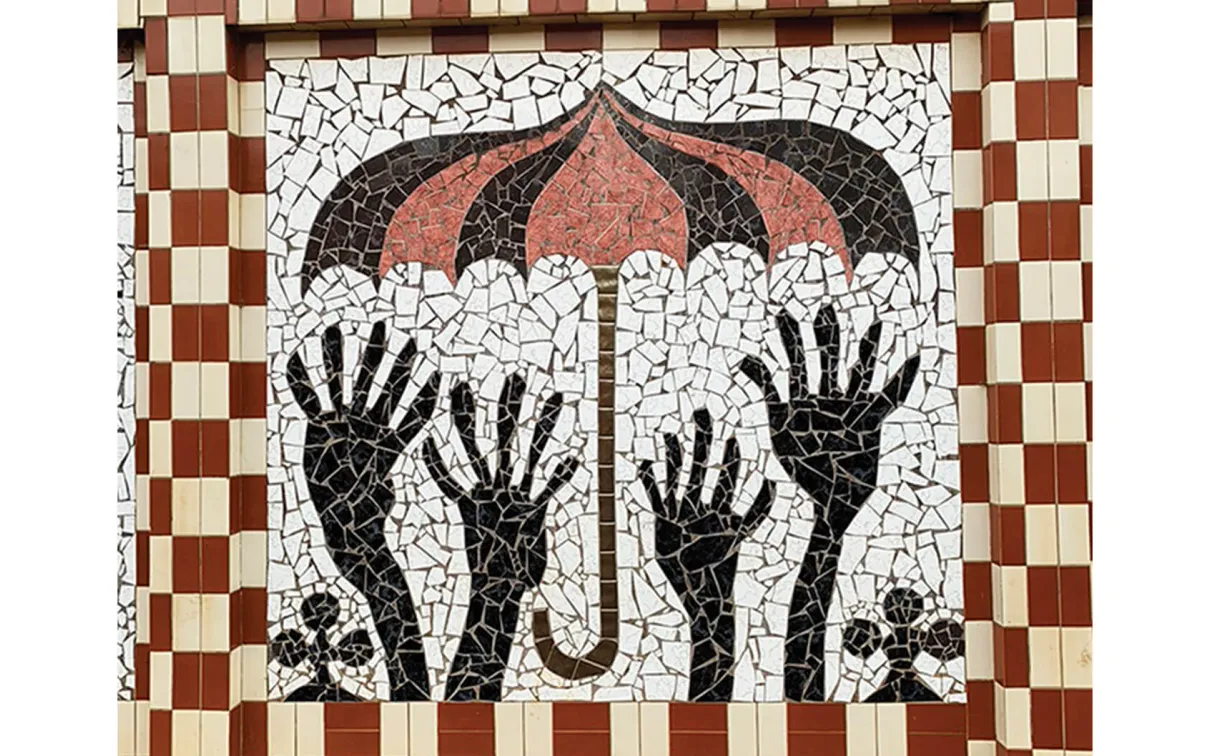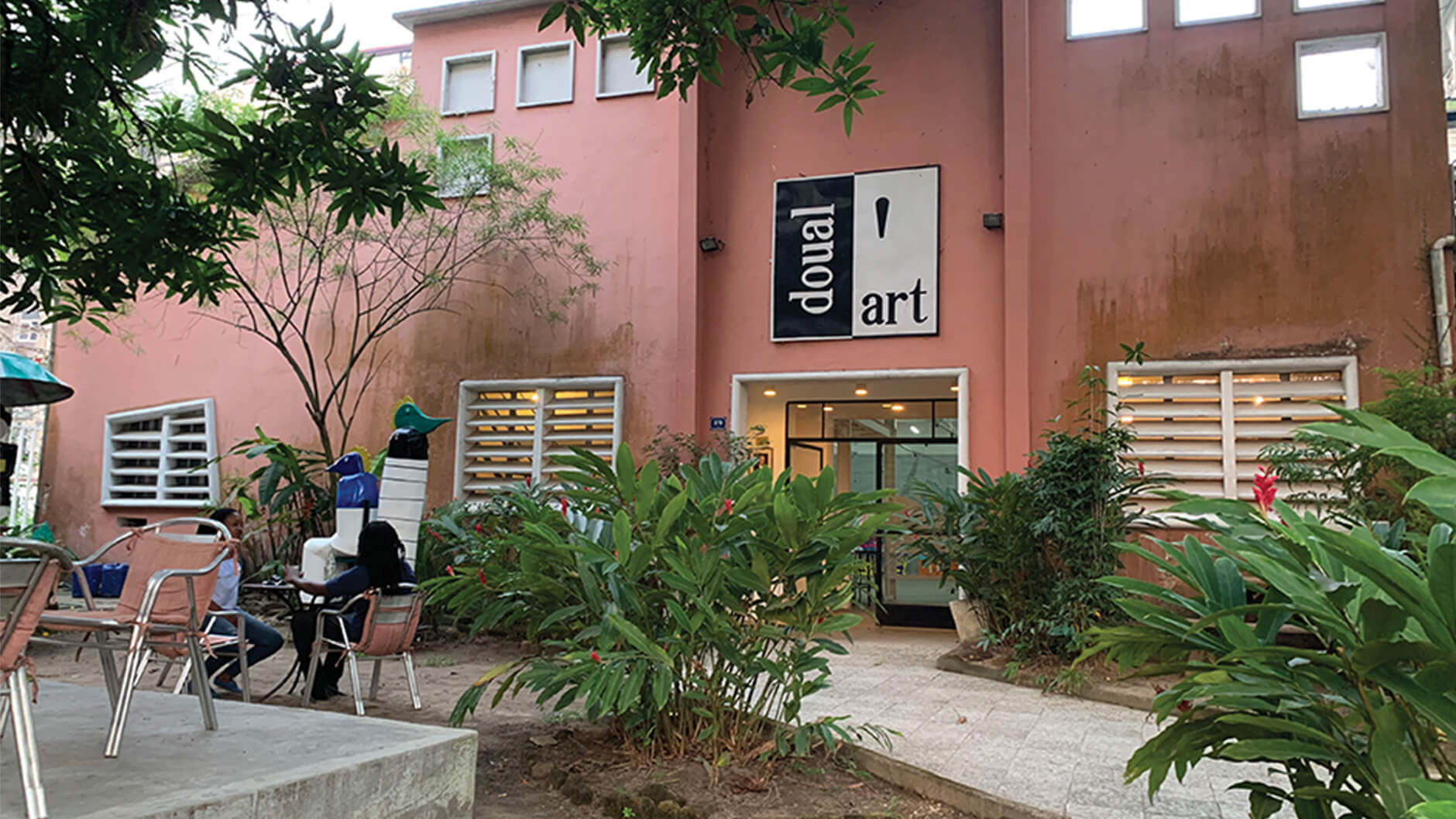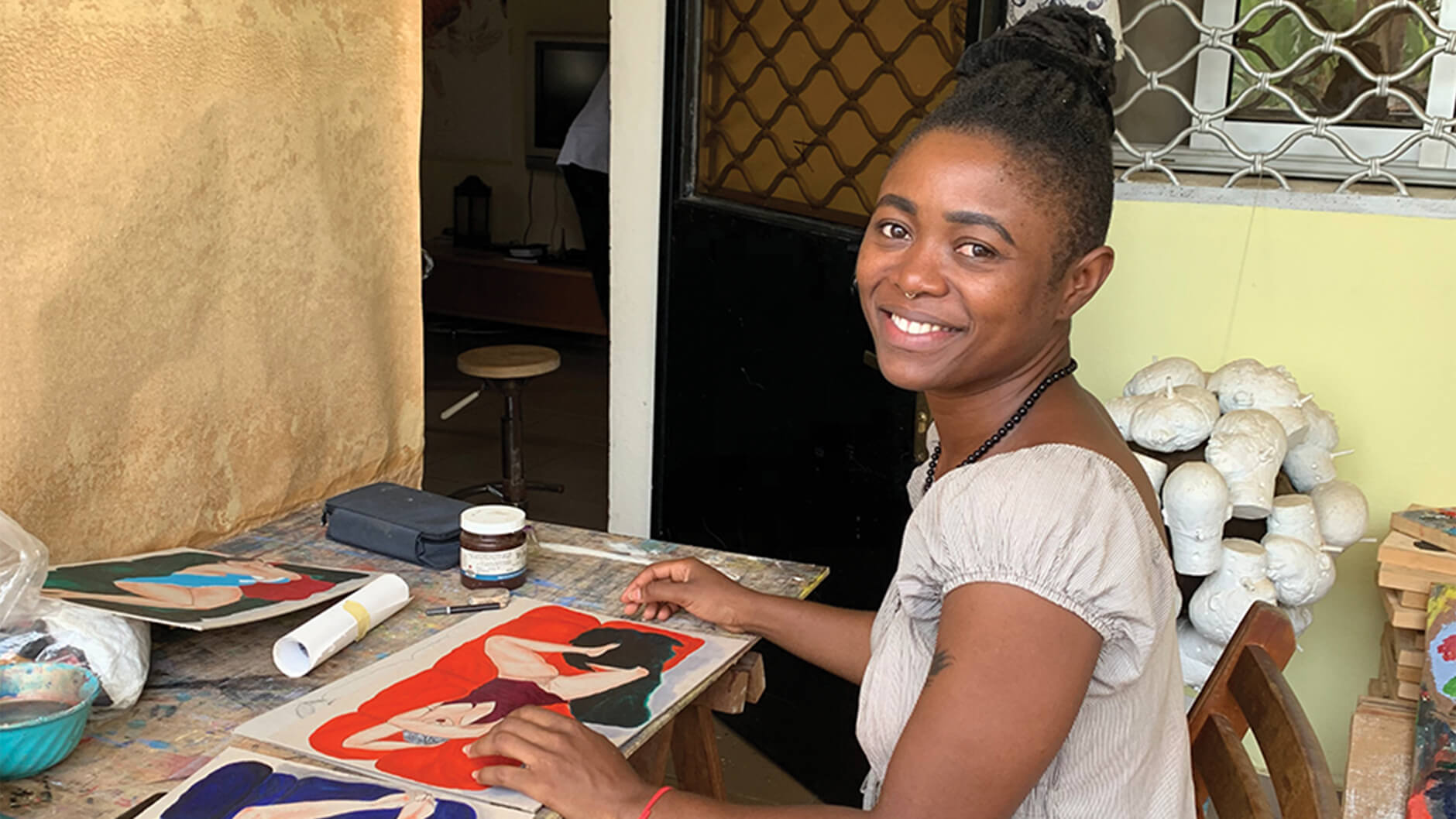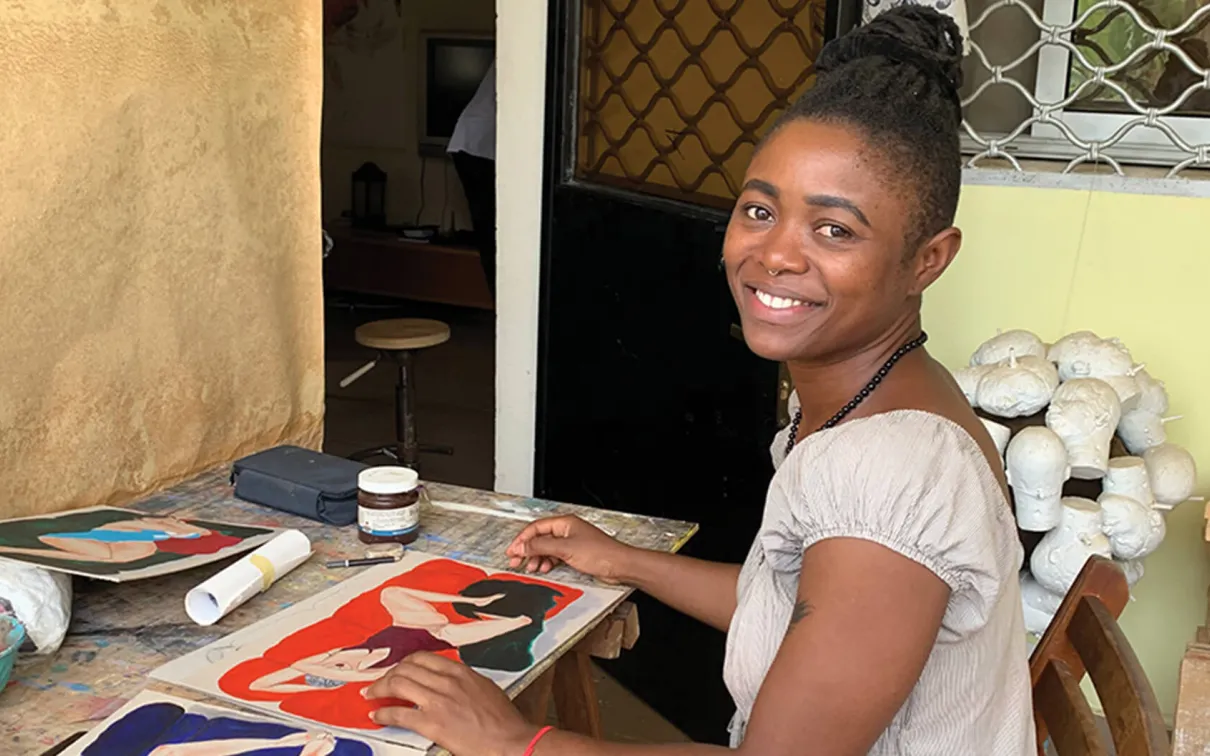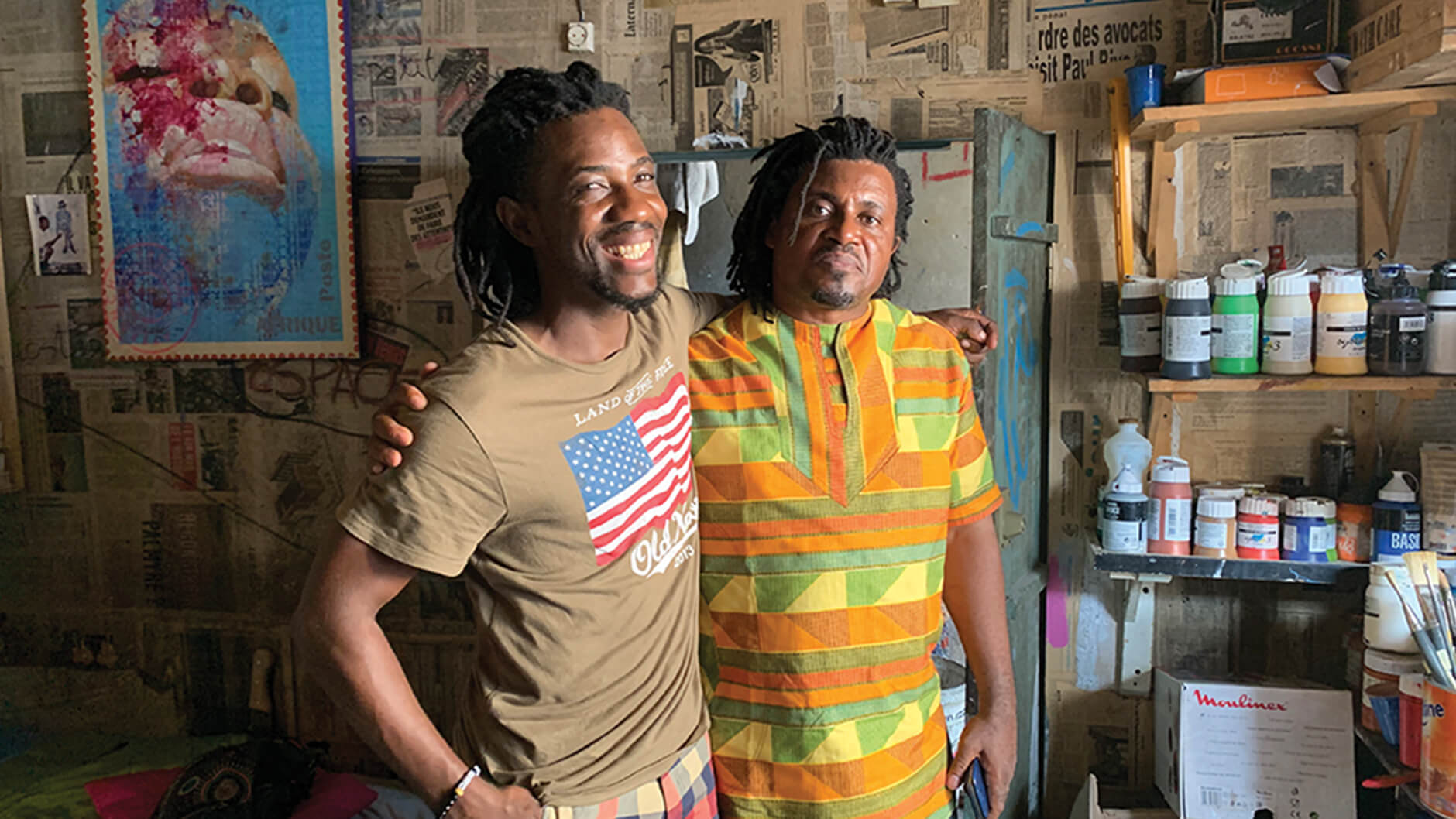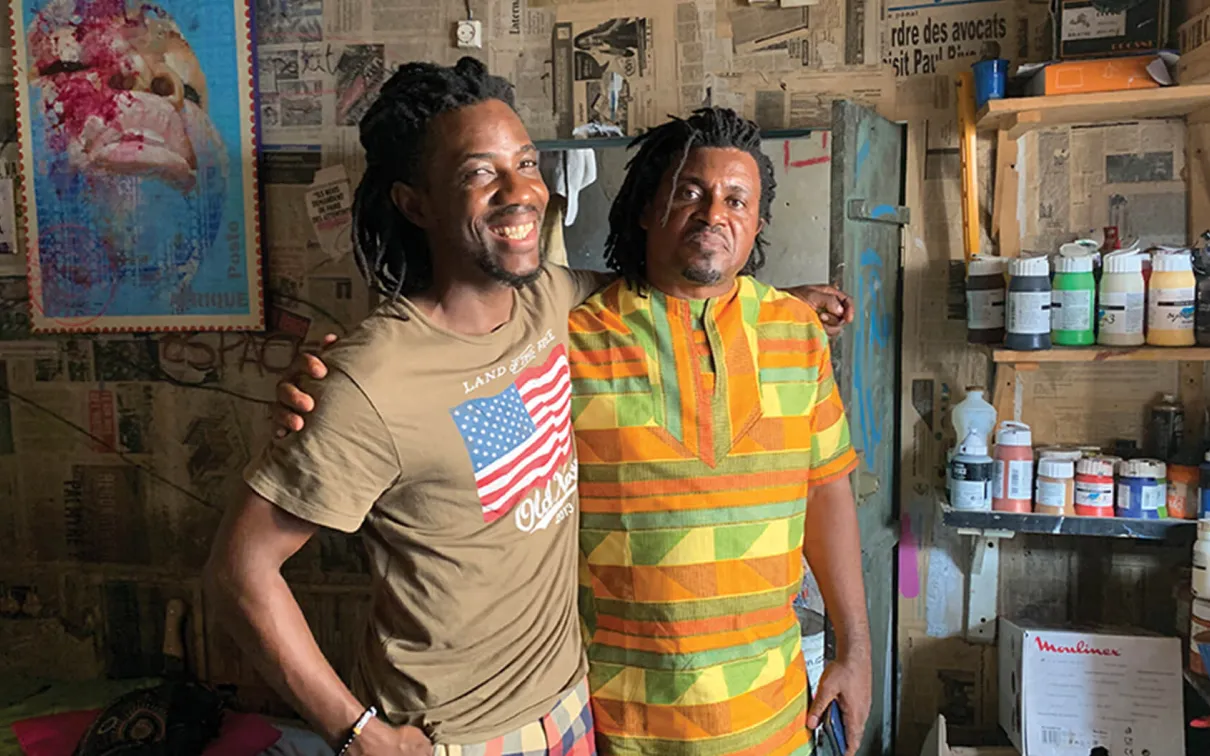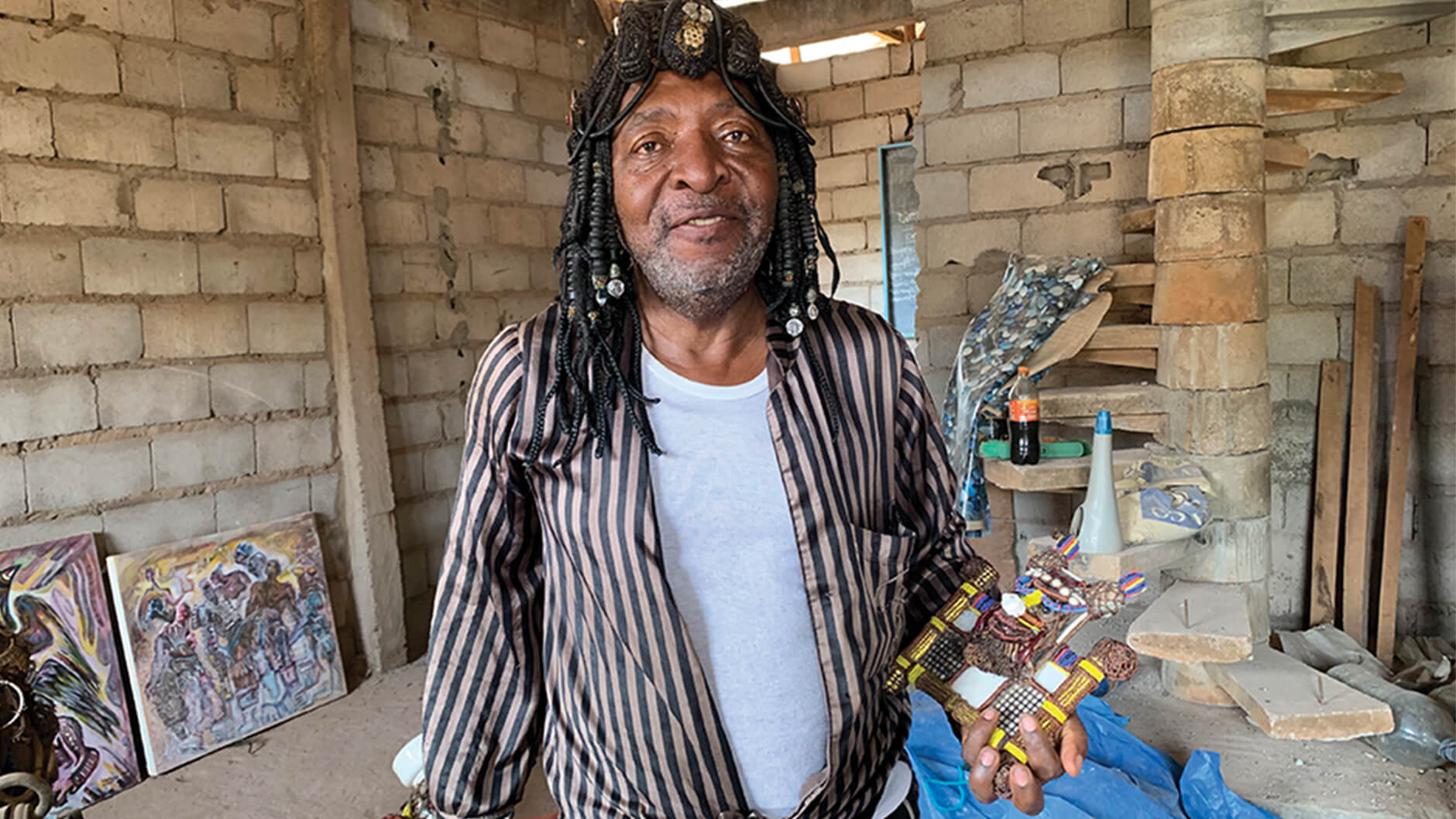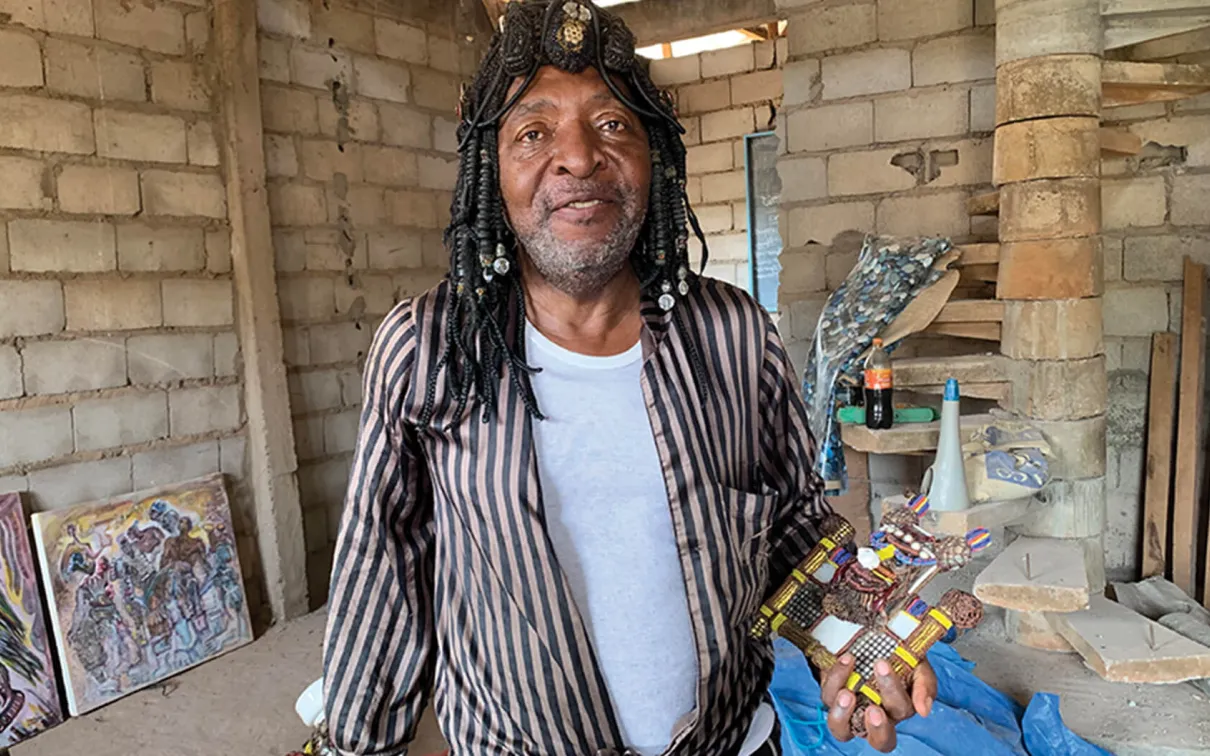Contemporary Art in Cameroon
A look at the extraordinary creativity and ingenuity across the region.
Published
Category
Author
In February of this year
In February of this year, just before the world shut down, I traveled to Cameroon for a three-week research expedition into the country’s robust art market. Though Cameroon is the African nation that I am most familiar with, I had not been back since 2013. And the goal of this trip was, in large part, to reconnect with people and places that I had visited in the past.
I had first arrived in the central African
I had first arrived in the central African nation in 1998 as a graduate student looking to answer research questions about creativity and tradition in the contemporary art market. Amongst other things, I was looking to discover how a creative ecosystem functions, how artists sustain, manage, and sell their work, and how to write a history of contemporary artistic production. Over the subsequent years, my research location shifted from potters’ compounds in the Ndop Plain in the country’s Northwest region to artists’ studios in the bustling cities of Yaoundé and Douala, but many of these questions continue to be relevant.
There is an extraordinary wealth
There is an extraordinary wealth of creativity and ingenuity across Cameroon. Historically, the nation is known as one of the most art-rich areas of the African continent—a place where chiefs, sacred kings, and religious leaders would build complex palace structures in bamboo or adobe, depending on the ecology of the region, and where leaders, notables and family heads would visually assert their status by wearing and displaying elaborate artworks made of fibre, wood, metal, and terracotta. Today, cities and villages continue to be important artistic centres, home to workshops and studios but also museums, galleries, exhibition spaces, art centres, and markets that cater to local, rural, and urban dwellers, as well as expatriates and international patrons. Cameroon is also the birthplace of several well-known, Europe-based contemporary artists, such as Barthélémy Toguo and Pascale Marthine Tayou, and globetrotting curators including Koyo Kouoh, Executive Director and Chief Curato, Zeitz MOCAA and Bonaventure Ndikung.
In studying Cameroon’s art scene
In studying Cameroon’s art scene, one may be tempted to draw a facile geographical divide between rural and urban artistic milieu. Yet, as in many other African countries, this separation does not correspond to the reality on the ground. The contemporary Cameroonian art scene is a complex space of interconnected relationships and trajectories linking urban and rural spaces in fruitful and interesting ways. For example, while most academically trained artists have studios in Yaoundé or Douala, many still maintain profound ties to family villages in rural areas, and the premier art institutes in the country, whether professional schools or universities, are all located in smaller centres such as Mbalmayo, Dschang or Foumban. Likewise, Bonendalé, where Justine Gaga and Joel Mpah Dooh have their spaces, is a rural artistic community, quite removed from the hectic rhythm of Douala. And Bandjoun Station, the large contemporary art space founded by Barthélémy Toguo, is located at the core of the Grassfields region, a few kilometres outside the town of Bafoussam.
The Cameroonian art landscape today is a complex space of interconnected relationships and trajectories linking urban and rural spaces.
This interconnectedness
This interconnectedness also extends to the artists themselves. As described to me by Marilyn Douala Bell, the co-founder of Espace Doual’art, the most longstanding contemporary art centre in the nation, historically there has been a sense of kinship that ties the different generations of practicing visual artists. Douala Bell calls this the “grand frère” system, whereby an artist that had gained some level of maturity and visibility on the local and international art scene would invite his younger “brothers” to share his space. Today, this system continues to hold in parallel to more formal training opportunities. Students spend their summer in the studios of practicing artists, where they have the chance to develop and experiment, while also participating in the multiple conversations that animate the life of a studio. All the artists that I was fortunate to meet during my three-week visit had stories to tell about their times with senior mentors who took them under their wings. Though, as in all families, there may be tensions and rifts, one perceives a palpable sense of familiarity and respect connecting so many of the “brothers,” and in recent years an increasing number of “sisters,” on the scene.
It is therefore not surprising that
It is therefore not surprising that, while traveling to international art fairs provides a good sense of the up-and-coming new generation of Cameroonian artists such as Boris Nzebo, Marc Padeu, Boris Anje, Jean David Nkot, and Ajarb Bernard Ategwa, the opportunity to visit artists at their places of work provides a much more complex and rich understanding of the ecosystem where they practice. And more broadly to view contemporary art from the African continent not as a new and unexpected trend, as it is often portrayed, but rather long-term historical development.
Silvia Forni
Silvia Forni is Senior Curator of Global Africa at the ROM.


